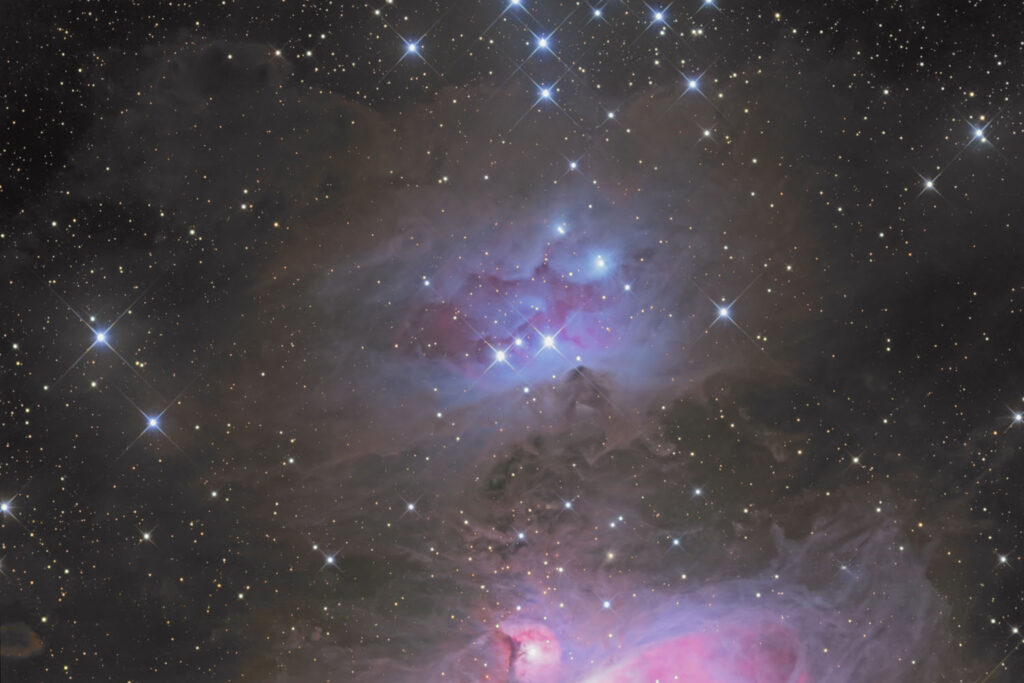NGC 1973
The Running Man Nebula, Orion
- Description
- Technical
- Links
Sh2-279 (alternatively designated S279 or Sharpless 279) is an HII region and bright nebulae that includes a reflection nebula located in the constellation Orion. It is the northernmost part of the asterism known as Orion’s Sword, lying 0.6° north of the Orion Nebula. The reflection nebula embedded in Sh2-279 is popularly known as the Running Man Nebula.
Sh2-279 comprises three NGC nebulae, NGC 1973, NGC 1975, and NGC 1977 that are divided by darker nebulous regions. It also includes the open cluster NGC 1981. The brightest nebulosity, later listed as NGC 1977, was discovered by William Herschel in 1786. He catalogued it as “H V 30” and described “!! 42 Orionis and nebula”. The two smaller reflection nebulae were first noted by German astronomer Heinrich Louis d’Arrest, NGC 1973 in 1862 and NGC 1975 in 1864. All three were included in the New General Catalogue in 1888. The designation NGC 1977 is used in various sources for the reflection area around 42 Orionis (the south-east portion of the reflection nebula), for the entire reflection nebula (including NGC 1973 and NGC 1975), or for the whole nebula complex.
This whole region in Orion’s Sword was also later catalogued as Orion 1c. In 1966, van den Bergh distinguished the weak clustering of reflection nebulae that includes Sh2-279 as Ori R2. Every reflection nebula appearing within the Sharpless catalogue was first identified on blue plates of the Palomar Sky Survey, and then double checked against the red plates to eliminate possible plate faults. Van den Berg found that there was a strong concentration of new T Tauri stars around the Orion Nebula, tapering off into a tail approaching Sh2-279.
The Running Man Nebula is a popular target for amateur astrophotographers, as it lies close to the Orion Nebula and has many nearby guide stars. The outline of the running man shows up primarily in photographs; it is difficult to perceive visually through telescopes, though the reflection nebula itself is visible in small to medium apertures in dark skies.
Telescope: ASA N16 f3.6
Mount: Astro Physics 3600GTO “El Capitan”
Camera: SBIG STL-11000M
Guider: SBIG STL-Internal
L: 21×5 mins = 105 mins, R: 12×5 mins = 60 mins, G: 12×5 mins = 60 mins, B: 12×5 mins = 60 mins
Total Imaging Time: 4h 45m
Data Imaged remotely over 2 nights during January 2010.
Data acquisition & Processing by David Churchill.
None

